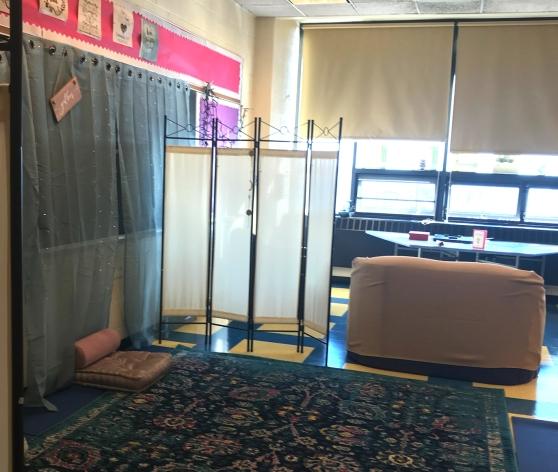
Educators in New York City’s academic high schools routinely face challenges. We adapt. We seek out resources. We pick our battles. Our students achieve academically and graduate. We witness our impact and, ultimately, we’re rewarded. Yet over the past two years, the COVID-19 pandemic brought many of us to a space where we found little joy. We seek joy in our craft as we strive to create a space where young people can learn, grow and experience their own joy. How do we succeed in this quest now? What’s required?
Across the city, high schools have devised their own school-based, collective solutions.
At Fort Hamilton HS in Bay Ridge, Brooklyn, packed with nearly 4,700 students, there was no room for staff to socially distance during their lunch periods. As Chapter Leader Kristen Brehm said, “Even just taking off your mask in front of others was anxiety-producing.” Recognizing the power of member voice, Brehm turned to her school’s consultation committee. The committee proposed alternative space and options for outdoor lunch for staff, and the school’s administration found discretionary budget money for picnic tables and tents.
Fort Hamilton HS school counselors uncovered food insecurity among their students, often resulting from COVID-related family unemployment. The school administration turned to the consultation committee, and UFT members stepped up. Educators facilitated the collection of nonperishable items while school counselors created an inquiry and distribution system to protect family privacy. Committee members raised more than $1,500. “We now have an ongoing pantry,” Brehm said.
Educator voice also drives Fort Hamilton’s professional development committee. Members decided to use their PD time for restorative and community-building sessions, including exercise and meditation sessions and art and guitar lessons facilitated by colleagues.
Leon M. Goldstein HS for the Sciences in Manhattan Beach, Brooklyn, has the Breathing Space, a mindfulness room created by members of the school community. It’s a place where students and staff can experience a social-emotional boost. “When I walk in the room, I feel relaxed. It’s just soothing,” said school counselor Maureen Hughes, who had the idea.
Before the pandemic, Hughes carved out time and space for mindfulness activities for students — initially 1-to-1 and then in small groups. In late 2019, using best practices shared by John Dewey HS counselors Cheryl Thomas and Roseann Ponce — who had created their own mindfulness space — Goldstein educators, school counselors, students and administrators rolled up their sleeves to make the room a reality.
No one could have predicted the anxiety and trauma the pandemic would bring, nor the benefit the Breathing Room would provide. Every lunch period is staffed by UFT members on a voluntary rotating basis.
Mindfulness has become an integral part of the school culture. The entire school stops on weekly Mindful Mondays as Hughes facilitates a breathing exercise and offers an affirmation. Students formed a mindfulness club and physical education teachers begin their classes with yoga. “I have conversations with students who talk about feeling ‘centered.’ What could be more affirming?” Hughes said.
We know the well-publicized narrative about educators losing their joy and experiencing pandemic burnout. But the less-heralded reality deserves a spotlight: Chapter leaders and members in high schools in every borough have collectively devised strategies that have brought change. It’s change that infuses joy back into their work or allows them to pause and simply breathe. It’s an inspiration for us all.